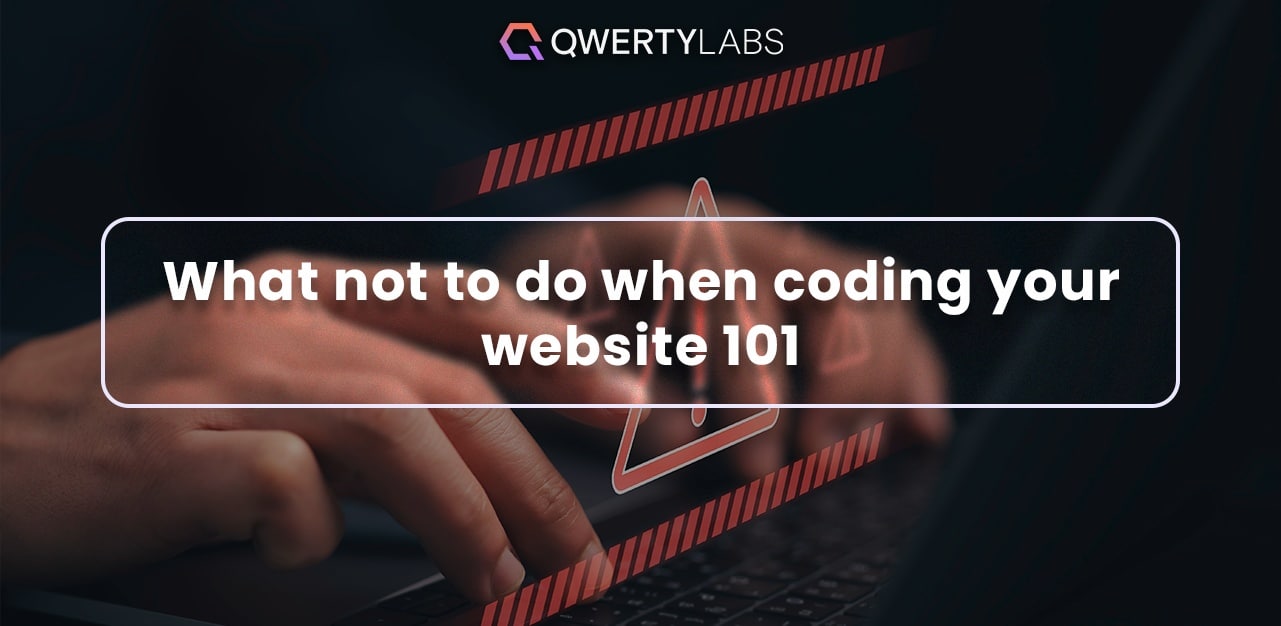Discover common coding mistakes like skipping code validation to help you write bug-free code. Build better websites with the expertise of QWERTYLABS.

Content writing is ever-growing as a career in almost every industry. It can be a promising career for you, thanks to many businesses reaching out to various social media platforms to place their advertisements. After all, people seek content to read and discuss with people of the same interest.
With such responsibilities, QWERTYlabs keeps its articles of the best quality possible before publishing through editing. Going through your work can be time-consuming, but the lengthy process can be broken down into several stages, each easier than the last. Here are QWERTYlabs' 3 easy steps to editing written content.
Editing serves two purposes for you, the writer, and your reader. Both of which are directly affected by how well your content turns out. You have to be careful with a few elements like grammar, typos, and structure, just as much as you should care about the accuracy of your data. The cleanliness of your article makes it presentable, while the accuracy of your information makes it reliable. Here's how these factors benefit both you and the reader:
Having a clean article speaks volumes of your skill in writing, and that's why QWERTYlabs take this stage seriously. A writer's value is measured by their ability to communicate an idea even more than how knowledgeable they are in a given field. You cannot be seen as a reliable communicator if your works have inconsistencies, wrong structure, and typographical errors.
Besides benefits to your reputation, writing also helps you grow as a professional content writer. Knowing your mistakes in your most recent works can help you be wary of them. You can catch yourself from making them again, making your editing stage of that new article shorter.
A reader only comes to read articles to answer questions. If your article is poorly written, it will end up without the answer they seek or conclude with a false one out of confusion. Considering that writers often overlook typos. Still, it gives the impression that the author didn't care about the content.
Thus, they are less likely to trust what you wrote, no matter how knowledgeable you are on the topic. You can prevent confusion by going over your draft again and try looking at it from the perspective of a different person.
Looking at your works with fresh eyes is the ideal way of preparing to edit your work. Ideally, you should give this duty to a different person, preferably a co-writer. If you do it yourself, you must break away from your mindset as you write. Here's how you look at your content with fresh eyes:
You have to take a break after writing for 1 hour or more. You can extend your break to 2 hours if you have the time. Take a nap in the meantime or have a meal to pass the time. Don't look at any screen or paper during your break because you should also rest your eyes to prevent straining.
A long break is necessary to refresh your mind. It is the most significant step you can take toward getting a different mindset from when you were writing. After the break, you should change the format of your draft a bit to make it easier to read.
The best way to change your content's format is by quickly adding spaces between lines and paragraphs. It is quick and effective at making your content seem unfamiliar without having to break away from the outline that you built.
There are two objectives in reading through your article again. The first is to find the flow of your writing as either engaging or understandable. Your second objective is to double-check if your content is optimised for SEO. These are different elements, one for the readers and the other to guarantee that your content will attract them in the first place.
The flow of an article refers to how you are reading it. Ask yourself if this is what you can read from top to bottom without breaking or if you can skim back and forth quickly between pieces of information you need. If you find yourself breaking momentum or finding it challenging to look for specific parts you need, then take note of it.
If your goal is to have the reader skim through it effortlessly, you should check for awkward transitions between talking points. Solutions can vary between having to add a new sentence in between chapters for an organic transition or rearranging paragraphs to build a new structure. Sometimes, you will have to do both, depending on how intense you think the problem is.
For articles meant to be more like a list of different pieces of information, you need to make it evident that your article is broken into sections. Headings are the most effective way to do this, while bullet points can also work in certain types of content like a listicle. See if any sentence seems out of place and try to find a way to transfer it somewhere it fits better.
Writing for SEO will always require you to use some or all essential keywords and phrases. Your goal as a content writer is to turn your content's traffic into sales, and the first step to doing so is making sure that they find your work in the first place.
Keyword placement is also crucial because just listing them down or forcing them into a random sentence won't work. Always make sure that where you put your keywords is where they should be. Google's algorithm can assess how understandable a sentence is and how relevant the rest of a paragraph is to the keyword.
Don't change anything yet. Just mark it and move on. It's better to make all the changes you need to make after identifying all of your mistakes. The best way to do this is to use editing markups, but the writing software you use can suffice. Do this as you read through the draft, then write down more complex changes in a separate document or notebook.
Complex changes can vary from the idea you got that could improve the flow of the content to the necessary cutting of some paragraphs. You could keep all of these in your head, but many people tend to forget them after proofreading a long article.
The reason why you should keep notes first is to reconsider them before implementing them. Some of the suggestions you wrote down could be executed differently or omitted after a second glance at your content. If you are unsure what mistakes to look for, refer to the other four in the five don'ts in content writing.
The last step in the editing process is to make the changes you carefully planned. Review your notes and follow them as you check your work from top to bottom. Try not to make more typos and grammatical errors in the process because you won't be coming back for them after this step.
Finalising your edits is easy, with no need for critical thinking. Once you're done with your notes, try using the document editor's spell and grammar checker if it has one. Microsoft Windows and Google Docs have them by default, but you can use third-party software, like Grammarly, for extra help. These should reveal any minor errors you missed, but they could also mark up some intentional ways of spelling. You can ignore those cases and focus on fundamental mistakes.
Editing is part of writing, especially if you are going to publish your work as a content creator. Despite its importance, it is quite simple if you know what to look for and how to change them appropriately. The above guide is a streamlined example of a reliable structured checklist that QWERTYlabs use.
Writing and editing are skills best entrusted to professionals with years of experience. If you want blogs, news, or content made for a website, you can contact us at QWERTYlabs so we can help you with the content your brand needs!
 7 web coding mistakes every web developer should know
7 web coding mistakes every web developer should know
Discover common coding mistakes like skipping code validation to help you write bug-free code. Build better websites with the expertise of QWERTYLABS.
 Embrace the future of web development with web testing automation for your online casino
Embrace the future of web development with web testing automation for your online casino
Stop wasting time on manual web testing! Discover the efficiency of automation with QWERTYLABS. Explore tools, benefits, and trends for streamlined testing to improve your online casino brand.
 A guide to proper brand event marketing to elevate your business
A guide to proper brand event marketing to elevate your business
Engage your audience with the right brand event marketing strategy. Discover tips and tricks to create impactful events with QWERTYLABS.
8F, One Trium Tower,
Filinvest Avenue, Alabang, Muntinlupa, Metro Manila
Philippines, 1799
[email protected]
+63 (02) 8971 8926